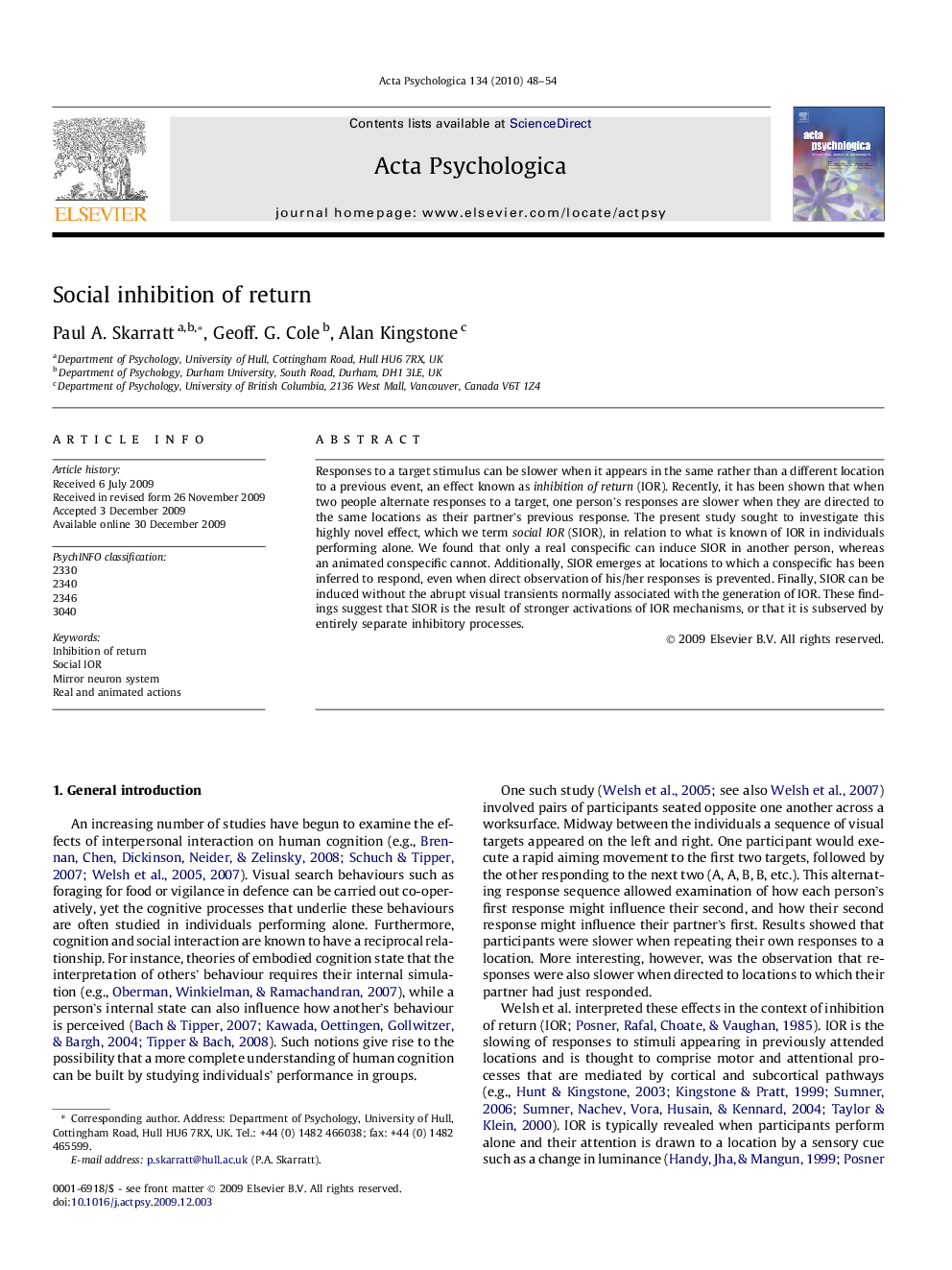| Article ID | Journal | Published Year | Pages | File Type |
|---|---|---|---|---|
| 920322 | Acta Psychologica | 2010 | 7 Pages |
Responses to a target stimulus can be slower when it appears in the same rather than a different location to a previous event, an effect known as inhibition of return (IOR). Recently, it has been shown that when two people alternate responses to a target, one person’s responses are slower when they are directed to the same locations as their partner’s previous response. The present study sought to investigate this highly novel effect, which we term social IOR (SIOR), in relation to what is known of IOR in individuals performing alone. We found that only a real conspecific can induce SIOR in another person, whereas an animated conspecific cannot. Additionally, SIOR emerges at locations to which a conspecific has been inferred to respond, even when direct observation of his/her responses is prevented. Finally, SIOR can be induced without the abrupt visual transients normally associated with the generation of IOR. These findings suggest that SIOR is the result of stronger activations of IOR mechanisms, or that it is subserved by entirely separate inhibitory processes.
